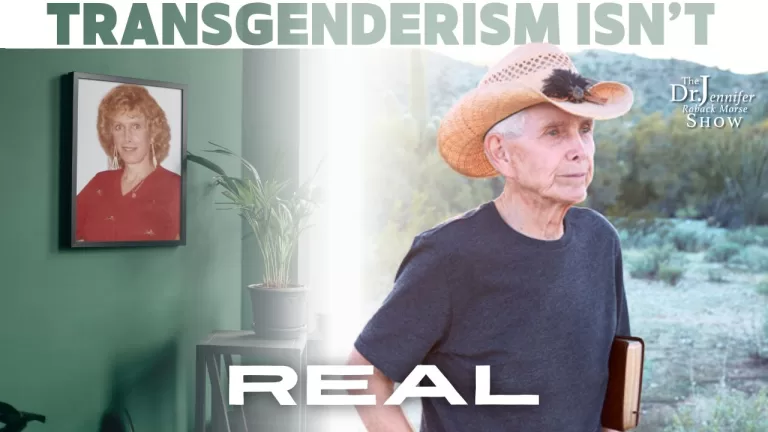There is no “witch hunt.” I don’t know anyone who wants to drive from the priesthood any celibate holy man who is true to Church teaching.
This article was first published at National Catholic Register October 29, 2018.
In the fallout from the revelations of former-Cardinal Theodore McCarrick’s serial sexual predation, some have worried about an “anti-gay witch hunt.”
Recently, a headline in America magazine all but shouted, “Homosexuality is not a risk factor for sexual abuse of children.” Yet, the Pennsylvania grand jury report that came out in August found about 80% of the teenage victims of clerical sexual abuse were male, just as
the John Jay Report found more than 10 years ago. This fact cries out for explanation. But many in the media and in the Church seem reluctant to focus
on this obvious connection. We must come up with an explanation that is true to the known facts, without harming any innocent person.
Before we tackle this explosive topic, let us clarify some important issues. Let’s think first about individual cases of sexual predation, by one specified
person against another specified person.
Every decent person wants the criminal justice system to gather the facts and come to an accurate verdict. Whether this individual perpetrator is “straight”
or “gay” is not germane. Percentages and probabilities don’t matter. Only one issue matters in an individual case: guilt or innocence.
Presumably everyone, from every point on the political, ideological or religious compass, agrees on this. Punishing the guilty and protecting the innocent
is not anyone’s definition of a “witch hunt.” Behind individual cases, however, lies a whole realm of institutions and structures and rules and incentives.
The big-picture institutional question is this: Is an increase in the number of same-sex attracted men in the Catholic priesthood correlated with an
increase in the number of incidents of abuse of minor boys? This is the question to which the John Jay Report replied, “No.” (pg. 102.) The answer to this question has potential implications for a whole series of other questions, including but not limited to:
- Should men with deep-seated homosexual tendencies be admitted to the priesthood? The Church already says “No” to this.
- Should such men currently in the priesthood be automatically laicized? Not only “No,” but I don’t even know anyone who says “Yes.”
- Should seminary and parish life be more highly structured to limit temptations for sexual activity? Obviously Yes.
- How should bishops and religious superiors handle non-criminal violations of celibacy? Many answers are possible, but religious authorities certainly
need to take this issue more seriously than they evidently have been.
Let’s get a couple of preliminary points out of the way. First, let us set aside the question of true pedophilia, that is, adults having sex with pre-pubescent
children. True pedophilia accounts for about 5% of the cases in the John Jay Report. I’m focusing exclusively on priests having sex with sexually mature,
but legally under-aged boys. Let us also set aside the important question of sexual harassment of seminarians, as we have no systematic data on the
matter.
Let’s also stipulate that an increase in the number of celibate same-sex attracted men would have a negligible impact on abuse. By definition, a celibate
priest is unmarried and therefore is to live the virtue of chastity by not having sex of any kind with anybody. A celibate priest, regardless of his
preferred partners, has renounced marriage and sexual relations for the sake of the Kingdom of God.
On the other hand, a person who defines celibacy as something other than complete sexual abstinence is playing word games, which is a problem of its own.
Finally, permit me to register my general complaint with the concepts of “sexual orientation” and “gay.” I have argued in print and in speeches that these terms are imprecise and unscientific, and hence problematic. In what follows, I will concede the use of the term “gay” or “homosexual” to
mean either a self-imposed label or as a short-hand for a man who engages in sex with other males.
With all that out of the way, let us return to the One Big Question: Are increases in the number of homosexual men in the clergy correlated with increases
in the numbers of incidents of abuse of minor boys?
We must somehow face up to the 80% of the cases of clergy sexual abuse that have teenage boys as victims. If same sex-attracted men and opposite sex-attracted
men are alike in every other respect, the only logical explanation is that 80% of the Catholic clergy is homosexually inclined. The highest number
I’ve ever seen is 50%, and most systematic estimates are closer to 20%-25% of the clergy being gay.
If that is the case, we have to ask ourselves whether homosexually inclined priests behave differently in systematic ways. Such secondary questions include:
- Are homosexual priests more likely to violate their vows of celibacy than heterosexual priests?
- Are homosexual priests more likely than heterosexual priests to prefer younger sex partners?
- Are homosexual priests more likely than heterosexual priests to abuse without being detected or reported? This is how the widely reported “homosexual
networks” could have an impact.
A correlation between numbers of homosexual men and incidence of abuse of minor boys doesn’t prove any one of points 1-3. Possibly some combination of
all three are at work in tandem. There could be additional factors we haven’t thought of.
These three points are explosive because they call into question the idea that “homosexual activity is a healthy variant of normal human sexual development.”
Many in today’s world have become deeply committed to that belief. We aren’t really discussing sociological data or “witch hunts.” We are discussing our
views of human sexuality, its purpose and place in our lives.
No matter what the truth of the causality proves to be, none of the possible explanations supports or is even consistent with, the claim that “gay is okay.” This, I believe, is the real explanation for the reluctance to accept the “Elephant in the Sacristy.” We would have to abandon a belief
that has become a cornerstone of the modern sexual revolution.
There is no “witch hunt.” I don’t know anyone who wants to drive from the priesthood any celibate holy man who is true to Church teaching. But there very
well may be a need for people to surrender beliefs they cherish. We are each going to have to decide whether our commitment to protecting children
takes precedence over sexual ideology.


